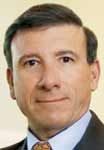- Acne
- Actinic Keratosis
- Aesthetics
- Alopecia
- Atopic Dermatitis
- Buy-and-Bill
- COVID-19
- Case-Based Roundtable
- Chronic Hand Eczema
- Chronic Spontaneous Urticaria
- Drug Watch
- Eczema
- General Dermatology
- Hidradenitis Suppurativa
- Melasma
- NP and PA
- Pediatric Dermatology
- Pigmentary Disorders
- Practice Management
- Precision Medicine and Biologics
- Prurigo Nodularis
- Psoriasis
- Psoriatic Arthritis
- Rare Disease
- Rosacea
- Skin Cancer
- Vitiligo
- Wound Care
Article
Lasers useful for promoting hair growth
Most of the time, when lasers are discussed in the context of hair, it is regarding the removal of hair. It was not until fairly recently that these devices received significant attention for their role in stimulating hair growth.

Key Points


The idea of using light to stimulate hair growth was first published in the 1960s and involved mice studies (Mester E, Szende B, et al. Kiserl Orvostud. 1967;19:628-631). Despite this history, the mechanism of action of how lasers may function to prevent, stop or even promote growth in AGA is still unknown.
There is clear evidence that low-level lasers alter cell function in some manner, and low-level laser therapy (LLLT) for wound healing, pain, anti-aging and inflammation is a popular - yet relatively unproven - modality. In vitro studies with different wavelengths have shown modulation of cell activity, including increased mitochondrial activity as well as increased production of ATP.
This "stimulatory effect" of light therapy is what has driven scientists and physicians to explore low-level laser photobiomodulation for hair growth. Clinically, LLLT does seem to provide some effect, although in some treatments it is difficult to measure. When it comes to AGA, most of the focus has been on red and near-infrared light devices (600 nm to 950 nm).
Ironically, many of the reports on hair growth and lasers actually originated from laser hair removal literature. Stimulation of hair growth is an adverse event associated with hair removal with intense pulsed light (IPL), diode and alexandrite lasers. If we could predictably control this "adverse event" and elicit it in patients who actually desire more hair, a new therapeutic option could emerge.
Several authors have tried to find the common variables in those patients experiencing paradoxical hair growth during laser hair removal. The percentage of patients treated for hair removal who experience hair growth is small (less than 1 percent, from all published reports). Patients with darker skin types (IV) treated with the alexandrite laser for hair removal were more prone to hair growth than those with lighter skin types (Alajlan A, et al. J Am Acad Dermatol. 2005;53(1):85-88).
Apart from one report of several women with polycystic ovarian syndrome, there are no set risk factors for hair growth in this subset of laser hair removal patients. (Moreno-Arias G, et al. Dermatol Surg. 2002;28(11):1013-1016). In general, when treating patients for hair removal with the alexandrite, those with darker skin types will receive lower-fluence treatments to avoid dyspigmentation. It may be this relatively low-fluence therapy that, in fact, puts someone at risk for hair growth, though this has yet to be substantiated with clear data.
Hair growth studies
Laser-induced hair growth in mice has been replicated using several different devices, including a helium-neon (He-Ne) laser (Shukla S, et al. Skin Pharmacol Physiol. 2010;23(2):79-85). In this study, mice treated with the He-Ne laser had a much higher percentage of hairs in anagen phase than those not treated.
There is one published double-blind, sham device-controlled, multicentered study on hair growth (Leavitt M, et al. Clin Drug Invest. 2009;29(5):283-295). A total of 123 patients with AGA were enrolled in this well-designed, company-sponsored trial. Hair counts were completed, as were photographic assessments and patient self-assessment scores. The treatment group used a low-level laser comb (655 nm, HairMax LaserComb, Lexington International) 15 minutes a day, three days a week, for a total of 26 weeks. Hair counts at the end of six months showed a statistically significant (p<.0001) difference in hair density counts between the laser group and the sham group (+19.8 hairs/cm2 vs. -7.6 hairs/cm2 ). There was also a statistically significant difference in the subjects' self assessments. However, blinded investigator clinical assessments did not demonstrate a statistically significant difference between the treatment and sham groups.
While LLLT with red light does stimulate terminal growth on hair count analysis, the clinical improvement is more difficult to judge. The study did not evaluate for any textural changes in hair. Textural changes may make hair appear clinically fuller, and patients may be happy with "thicker" hair that doesn't necessarily exhibit a higher hair count. It may be that longer treatment sessions or duration of the treatment is needed. It may also be more helpful clinically when used in combination with other therapies, such as hair transplant, finasteride or minoxidil.
Current devices
Currently, there are several devices available on the market that use lasers for hair growth. All utilize wavelengths of 630 nm to 670 nm and are categorized as nonsignificant risk (NSR) devices. The most popular hair-growth laser devices for home use are the Hair Max LaserComb (FDA 510(k)); the Laser Hair Brush (Sunetics); the X5 Hair Laser (Spencer Forrest); and the Aculas HB-850 (Konftec).
These devices contain different numbers and arrays of laser diodes ranging in power from 2 mW to 20 mW per diode and a total power of 20 mW to 100 mW. These units are hand-held, and the recommended treatment protocols are 10 to 15 minutes, two to three days per week. The patient must sequentially move the device during the treatment period to ensure coverage of the entire affected area.
In-office LLLT systems resemble salon dryer "hoods" and are available with higher total-dose delivery (up to 2,000 mW) than the at-home devices. One example is the Sunetics Model "G" Laser, which has an open hood composed of four panels containing a total of 107 5-mW laser diodes to treat the entire top-scalp area. These in-office treatments also come with a bigger price tag (around $3,500 to $5,000 per year for the patient).
In February, an in-office device known as the MEP-90 hair growth stimulation system (Midwest RF) received FDA 510(k) clearance for the treatment of AGA in female patients. It is currently the only device specifically studied and approved for women. At-home versions of the in-office devices are also available on the Internet, though it is difficult to ascertain the actual parameters of the device.
Recently, a home-use device with greater laser power than most in-office systems was developed under the name LaserCap (Transdermal Cap). It contains 224 5-mW laser diodes in a mesh network that covers the entire top of the scalp and fits under a hat or cap. It has a rechargeable battery so that treatment can be administered while "on the go" in a convenient, discreet fashion. The LaserCap is available to patients through physicians at a rental cost and is currently undergoing further clinical evaluation.
Optimum treatment frequency and duration have not yet been determined for hair-growth laser therapy, and it is theoretically possible that large overdoses could reverse the therapeutic effects. In other words, more power with LLLT does not necessarily translate into better results. Long-term follow-up of patients receiving LLLT for AGA is needed to determine if therapeutic benefits can be maintained with prolonged therapy.
Alopecia areata
Laser and light devices have been used in other types of hair loss, including alopecia areata (AA). Lasers for use in AA primarily function via immunomodulation, targeting the primary pathology in this condition. The eximer laser (308 nm) has shown success in several trials for this disease via the mechanism of ultraviolet immunosuppression (Al-Mutairi N. Dermatol Surg. 2007;33(12):1483-1487). While effective in AA, the eximer laser is not likely to be useful for nonimmune types of hair loss, such as AGA.
In summary, LLLT is a safe, tolerable and easy-to-use treatment option for patients with AGA. Hair counts have been shown to increase in the only double-blinded study published. Proper parameters and treatment regimens must be better elucidated in order to make this treatment more universally accepted.
At this point, LLLT (red, 630 nm to 670 nm) for AGA seems to show some effects in some patients, yet future studies are needed to optimize results by better defining treatment power, dosing and frequency. With so few reliable noninvasive therapeutic choices for AGA, laser therapy is a welcome addition.
Joely Kaufman, M.D., is assistant professor of clinical dermatology at the University of Miami Miller School of Medicine and director of lasers for the University of Miami Cosmetic Group.
Bernard Nusbaum, M.D., is a board-certified dermatologist specializing in hair loss and hair restoration. He is past president of the American Board of Hair Restoration Surgery and co-editor of Hair Transplant Forum International.
Newsletter
Like what you’re reading? Subscribe to Dermatology Times for weekly updates on therapies, innovations, and real-world practice tips.











